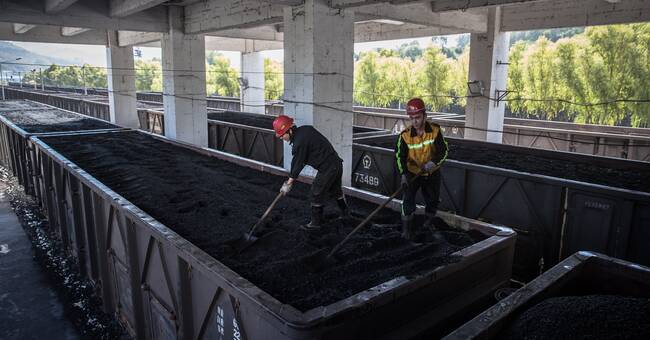The mighty China, climate hero and climate marauder.
The situation can be described as a race between a black and a green horse.
No one knows who will win.
When Donald Trump came out as a climate denier, China saw its chance.
Chinese President Xi Jinping stepped forward and said that China would lead the world towards a green future.
China promised to become carbon neutral by 2060, a historic decision.
The outcome was met with light applause.
European environmental movement gave a thumbs up.
China as a climate fighter instead of the USA?
Sure, now we're driving!
More than half the coal
It's not hard to believe Xi Jinping's promises.
China's share of renewable energy is growing fastest in the world.
China has also exported cheap solar panels and wind turbines worldwide.
But China is also an economy locked in a growth machinery powered by coal and the chance that China will achieve its climate goals is currently vanishingly small.
This is extremely bad news for the planet and China uses almost as much coal as the rest of the world.
This week, a calculation came that shows that China built a new coal-fired power plant every week in 2020, even though it has also closed twice as many that were really dirty and old-fashioned.
At the same time, China calls coal a green energy source, explains China expert Karl Hallding in this week's episode of the Foreign Office.
The "green" consists of washing away the soot particles, which gives a cleaner air.
Even away
But China is not content with its own coal expansion.
China plans to build coal-fired power plants in 34 countries and thus accounts for 80 percent of the planned new construction of coal-fired power in the world.
China defends the investments by saying that coal provides reliable and cheap energy and lifts people out of poverty.
And it is not possible to place all the responsibility on China, in the recipient countries there are politicians who say yes to China's offer to build coal power.
They could say no.
In the global climate negotiations, China is doing what it wants and has successfully dictated the terms.
China signed the Paris Agreement in 2015, but on the condition that they be allowed to belong to the group "developing countries," and be part of the same group as some of the world's poorest countries such as Yemen and Afghanistan.
This means that China has the right to increase its emissions by 2030. That last year they built a new coal-fired power plant every two weeks was therefore not in conflict with the agreement, strange as it may sound.
China's view is that it is the rich western world that has caused the climate crisis and that it is therefore the United States and the EU and others who must pay for the measures.
China has one point, because if you count per capita, it looks different.
A Chinese person has a much smaller carbon footprint than, for example, a Swede.
This is how the West wants to put pressure on China
The solution is about money.
China sees enormous opportunities to profit from the green transition and has both its own companies and a domestic giant market.
But both the EU and the US also have plans on how to punish China financially if they do not sharply reduce their emissions.
The so-called carbon dioxide tariffs, which means that the carbon footprint of imported goods is taxed.
If China dumps goods on the European or American market produced in coal-fired industries, the EU and the United States can claim that the goods were manufactured without regard to finite resources and human and animal health.
Chinese companies could quickly lose their advantage as a low-cost producer of goods.
In a few days, the new five-year plan will come.
There, it will be seen whether China is serious about sharply reducing its emissions after 2030.
How they will cope with that mathematics with their ongoing coal expansion will be interesting to see.
This week's episode of the program Foreign Office is about China and its role in the world climate: villain or hero? Watch the program here on SVT Play or 22.00 on Tuesday on SVT2.

